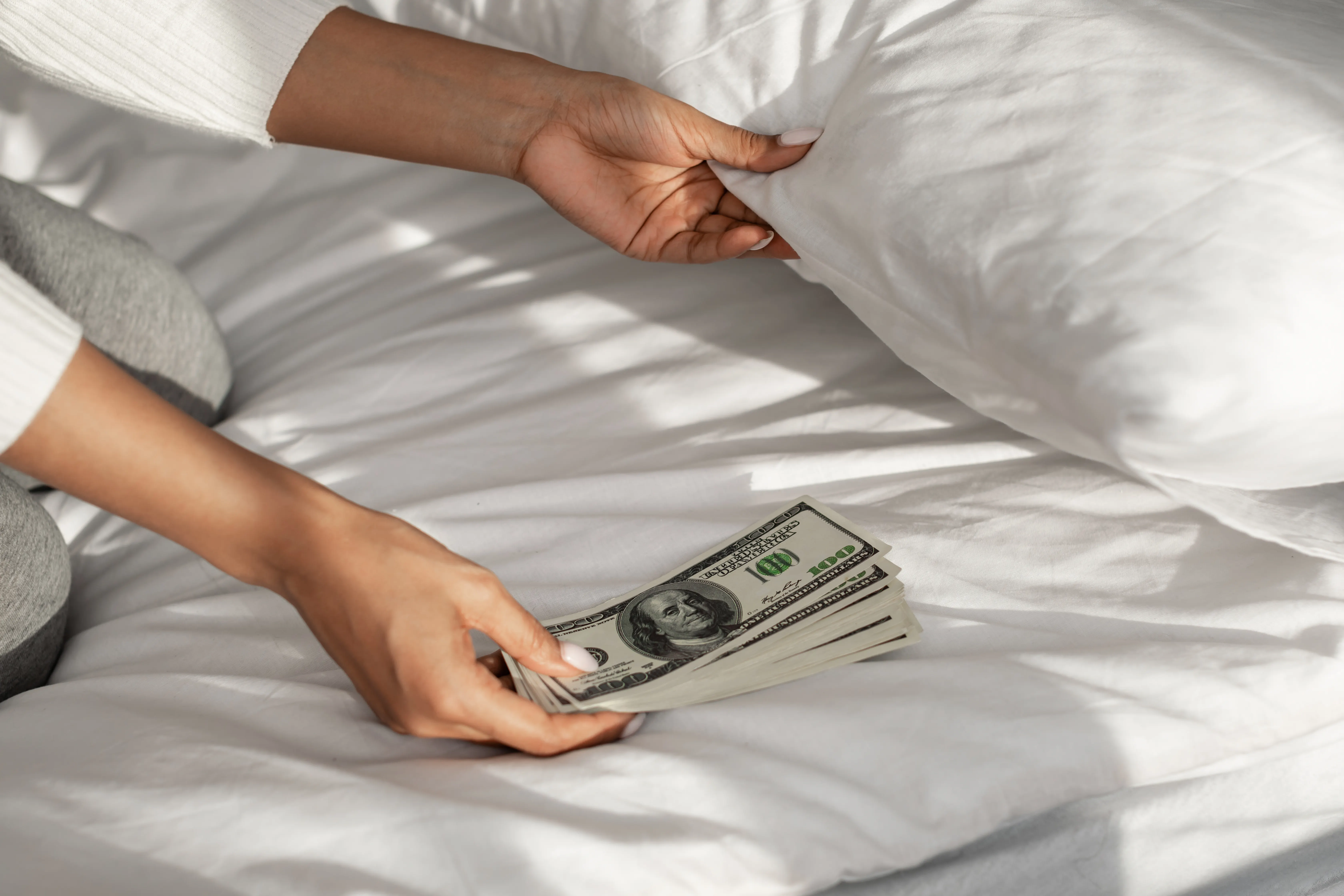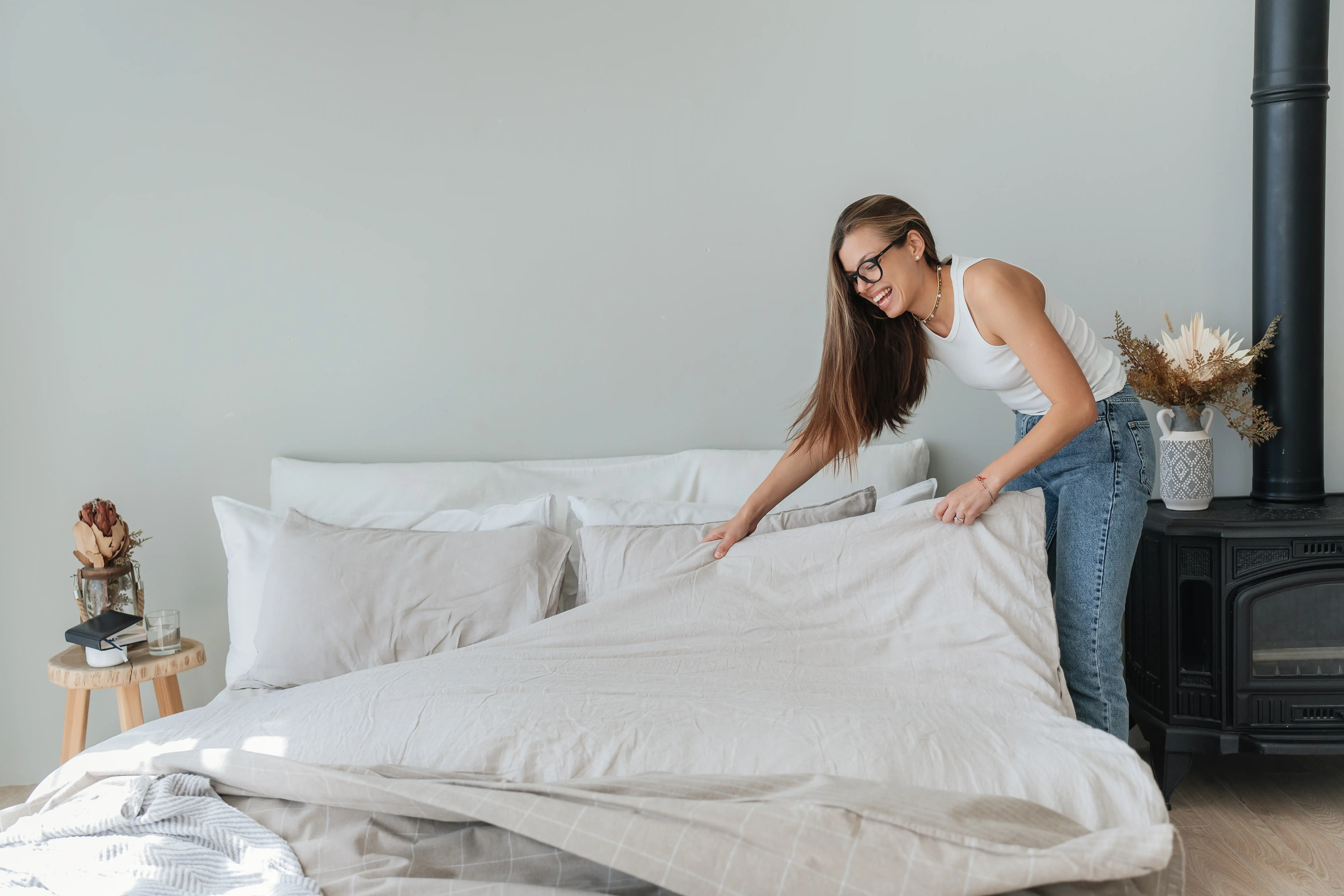Duvet covers often come with surprisingly high price tags, leaving many shoppers wondering what justifies the cost. After all, it’s just a fabric layer that goes over your comforter, so why is it sometimes pricier than the duvet itself?
The truth is, several hidden factors contribute to the pricing of duvet covers, including the quality of materials, craftsmanship, and even branding.
In this article, we’ll break down the real reasons why duvet covers can be so expensive and whether they’re worth the investment.
What You’re Paying for in a Duvet Cover

Duvet covers aren’t just about aesthetics; they reflect the materials, labor, and brand values behind them. While the price might seem high at first glance, breaking down what goes into a quality duvet cover reveals the true value.
Understanding how duvet covers function can help you choose the right one for your needs and make caring for your bedding easier. From premium textiles and hand-stitched details to eco-conscious practices and innovative designs, here’s what your money is going toward.
Quality of Materials
Many duvet covers come with a higher price tag largely due to the fabric choices used in their construction, which can significantly affect comfort, longevity, and cost.
High-quality fabrics not only improve comfort and longevity but also contribute significantly to production costs. Below are a few reasons why material quality impacts the price of duvet covers.
- Premium Fabrics: High-end duvet covers often utilize materials such as Egyptian cotton, silk, or Belgian linen duvet covers, which feel softer, last longer, and breathe better than cheaper synthetics. These fabrics cost more to source and process.
- Sustainable Fabrics: Materials such as organic cotton, bamboo, or TENCEL™ are increasingly popular. They’re gentler on the environment but often require more careful harvesting and production, which drives up costs.
- Durability: Thicker weaves and high thread counts (typically 300 or more) mean your cover will hold up better to regular washing and daily use, but these enhancements require more raw material and tighter manufacturing standards.
Craftsmanship and Design
The level of craftsmanship and design detail that goes into a duvet cover can greatly affect its cost. From intricate hand-finishing to exclusive patterns, these elements require more time, effort, and expertise. Here are a few ways craftsmanship and design contribute to the higher price of duvet covers.
- Handcrafted Finishes: Some duvet covers feature embroidery, piping, zippers, or special closures that are sewn by hand. A high-quality zipper closure not only adds a sleek look but also improves functionality, offering a more secure and convenient way to seal your duvet compared to traditional buttons.
- Design Complexity: Unique patterns, textures, or woven-in designs (as opposed to printed ones) often require more advanced techniques and longer production time, which raises the price.
- Limited Editions: Brands occasionally release small-batch designs or seasonal collections. Their exclusivity often justifies a higher price tag, especially when they're not mass-produced.
Brand and Reputation
Established brands often charge more due to their trusted quality, design legacy, and consistent customer satisfaction. Here are some ways branding influences the price of duvet covers.
- Designer Collaborations: A duvet cover designed in partnership with a well-known designer or artist often carries the premium of both the creative input and brand cachet.
- Brand Reputation: Companies known for ethical practices, innovation, or luxury naturally set higher price points based on their market position, and customers are often willing to pay for that trust. For example, the Eucalypso Heavenly Duvet Cover combines premium sustainable fabrics with elegant design, reflecting the brand’s commitment to quality and comfort.
Eco-Friendly and Sustainable Practices
Sustainably sourced materials and ethical production methods can raise costs but appeal to conscious consumers. The following are several sustainability-related factors that contribute to the cost.
- Organic Fabrics: Certified organic materials are grown without harmful chemicals and pesticides, making them healthier for you and the planet, but also pricier to produce.
- Ethically Made: When brands ensure fair wages, safe working conditions, and responsible sourcing, production costs rise. But these ethical practices are increasingly important to conscious consumers.
- Environmentally Friendly Dyes: While non-toxic, water-saving dyes aid in pollution reduction, they necessitate alternative techniques and increased oversight, both of which are costly.
Versatility and Multi-Use Designs
Some duvet covers are designed for year-round use or reversible styles, adding value through function and flexibility. Some of the design features that contribute to this added cost include the following:
- Reversible Covers: Dual-sided designs allow users to switch up their bedroom look without buying a second cover. These require more fabric and stitching detail, which adds to the price.
- Adjustable Sizes: Some duvet covers include thoughtful closure types like ties, buttons, or zippers to adapt to different insert sizes or prevent shifting, adding convenience and functionality. These thoughtful features add convenience but also increase manufacturing complexity.
The Role of Thread Count and Weaving Techniques
While materials and brand reputation play a major role in duvet cover pricing, the way a fabric is made, its thread count, and its weave also significantly affect cost and comfort. These technical aspects often go unnoticed but directly influence a cover’s softness, durability, breathability, and appearance.
Thread Count
A higher thread count usually means a smoother, denser fabric, which feels softer and more luxurious to the touch. Consider these points that explain why thread count affects pricing:
- Luxury Perception: Premium duvet covers often start at 300 threads and can go up to 800 or more. The finer the threads and the denser the weave, the more expensive it is to produce.
- Balance Over Hype: While thread count matters, extremely high numbers can be misleading. Some brands inflate counts by twisting threads together. True quality depends on a balance between thread count and fiber quality.
- Comfort and Durability: A moderate-to-high thread count using long-staple cotton (like Egyptian or Pima) provides a soft yet breathable cover that can withstand years of washing without pilling or thinning.
Weaving Techniques
A fabric's weave affects its appearance, feel, and durability. Here are different weaving methods that contribute to different finishes and price points.
- Percale Weave: This one-over-one-under weave creates a crisp, matte finish. It’s breathable and cool to the touch, ideal for warmer climates, but often requires higher thread counts for durability.
- Sateen Weave: With more threads on the surface, sateen feels silkier and has a subtle sheen. It’s softer and heavier than percale, offering a more luxurious feel but at a higher cost.
- Jacquard and Dobby Weaves: These involve intricate patterns woven directly into the fabric rather than printed on. They require specialized looms and take more time to produce, resulting in a higher-end, decorative duvet cover.
Benefits of Investing in an Expensive Duvet Cover

Spending more on a duvet cover might seem excessive at first, but the long-term value often justifies the price. From enhancing your sleep quality to elevating your bedroom’s overall aesthetic, premium duvet covers offer several benefits that budget options simply can’t match.
Comfort and Sleep Quality
Premium duvet covers are made from high-thread-count fabrics and breathable materials that feel softer against the skin, helping regulate body temperature and improve overall sleep quality. Here are some ways these features can promote comfort and sleep quality.
- Softness and Texture: High-quality materials like long-staple cotton or silk feel smoother and more luxurious against your skin. This extra softness can enhance relaxation and lead to a more restful night’s sleep.
- Temperature Regulation: Expensive duvet covers often feature breathable fabrics like linen, bamboo, or TENCEL™, which wick away moisture and help prevent overheating throughout the night. They help regulate body temperature and reduce overheating, which is crucial for uninterrupted sleep.
Longevity and Durability
Expensive duvet covers are built to last, with stronger weaves, reinforced stitching, and higher resistance to pilling or fading. They maintain their appearance and function even after frequent washing, making them a worthwhile investment over time.
Higher-end duvet covers are designed to last. With tighter weaves, reinforced seams, and premium fabrics, many also offer easy maintenance, requiring less frequent replacement or repairs. Investing once can mean avoiding replacements for years, making them cost-effective in the long run.
Elegant Aesthetic
Luxury duvet covers often come in sophisticated colors, refined textures, and designer-level details. Whether it’s a minimalist hotel-style look or a rich, textured weave, a high-end cover can elevate your bedroom decor, making it look more polished and intentional.
Is a High-Price Duvet Cover Worth It?
Whether or not a luxury duvet cover is “worth it” depends on your priorities, lifestyle, and budget. While it’s easy to focus on the upfront cost, looking at the long-term benefits can make the price more justifiable, especially if comfort, durability, and design matter to you.
Long-Term Benefits
- Cost Per Use: A quality duvet cover used daily over several years can be more cost-effective than cheaper ones that need frequent replacing. When you break down the cost by night, the investment starts to make more sense.
- Increased Durability: Higher-end covers are made with better stitching, stronger fabric, and thoughtful construction. They’re less likely to fade, shrink, or tear, meaning you won’t be shopping for a replacement anytime soon.
When to Choose a Luxury Duvet Cover
- If you Prioritize Quality Sleep: Breathable, soft, and temperature-regulating fabrics can genuinely improve how well you sleep. If you're a sensitive sleeper or struggle with overheating, investing in quality bedding is worth considering.
- For Those Who Value Aesthetics: If you care about the look and feel of your space, a well-designed duvet cover can pull your entire bedroom together. It adds a layer of elegance that cheaper options usually lack.
Creating your own duvet cover can be a fun and rewarding project that lets you add a personal touch to your bedroom decor while saving money. With some basic sewing skills and a few simple materials, DIY duvet covers allow you to customize fabric choices, patterns, and sizes to perfectly fit your style and needs.
How to Care for Expensive Duvet Covers

To get the most out of a luxury duvet cover, proper care is essential. High-end fabrics and finishes require a little more attention than basic covers, but with the right cleaning and storage practices, you can preserve their quality and appearance for years to come.
Cleaning and Maintenance Tips
Luxury duvet covers often come with specific washing instructions, depending on the material. Always check the care label first.
- Wash with Mild Detergent: Use a gentle, fragrance-free detergent to avoid damaging delicate fibers. Harsh chemicals can break down natural fabrics like cotton, linen, or silk.
- Cold or Warm Wash Only: High heat can shrink or warp high-quality fabrics. Stick to cold or lukewarm settings and choose the delicate cycle when possible.
- Air Dry or Tumble on Low: Air drying is ideal for preserving fabric strength and texture. If you use a dryer, select a low heat setting to prevent damage or fading.
- Avoid Fabric Softeners: Softeners can leave residues that affect breathability and texture. Go for vinegar as a natural alternative, if needed.
Storage and Protection
Storing your duvet cover properly between seasons or during rotation will help maintain its condition.
- Store in a Cool and Dry Place: Keep your duvet cover in a breathable cotton or linen bag rather than plastic, which can trap moisture and cause mildew or yellowing over time.
- Use a Duvet Protector: A lightweight duvet protector or coverlet placed over your duvet cover during daily use can help minimize wear and staining, especially if you have pets or kids.
FAQs
Is an Expensive Duvet Cover Worth It?
Yes, if you value comfort, durability, and design. High-quality duvet covers offer better materials, craftsmanship, and sleep-enhancing features that make them a smart long-term investment.
Why Do Duvet Covers Cost More Than a Comforter?
While it may seem backward, duvet covers often use finer materials and more detailed construction than mass-produced comforters. You’re paying for premium fabrics, tailored finishes, and brand reputation, not just warmth.
What's the Point of a Duvet Cover?
A duvet cover protects your comforter from dirt, sweat, and spills, extending its life. It also makes cleaning easier, since covers are machine washable, and allows you to change the look of your bedding without buying a whole new insert.
Conclusion
At first glance, the price of a duvet cover might feel hard to justify, but when you break down the craftsmanship, material quality, and long-term benefits, the cost starts to make sense.
Whether you're aiming for better sleep, a more elegant bedroom, or a product that lasts, a luxury duvet cover can be well worth the splurge. And with proper care, it’s an investment that will continue to pay off night after night.
Jessica H.
Jessica is a reviewer, writer, and sleep enthusiast at Sleepiverse. Jessica graduated with her master's degree in Nursing research and education. She is a registered nurse and currently works in the Intensive Care Unit. Since becoming a nurse, Jessica has worked the night shift, which means a disrupted sleep schedule. Knowing she needed to function at her best while caring for patients at night, she spent a lot of time researching how to sleep well with a difficult schedule.


